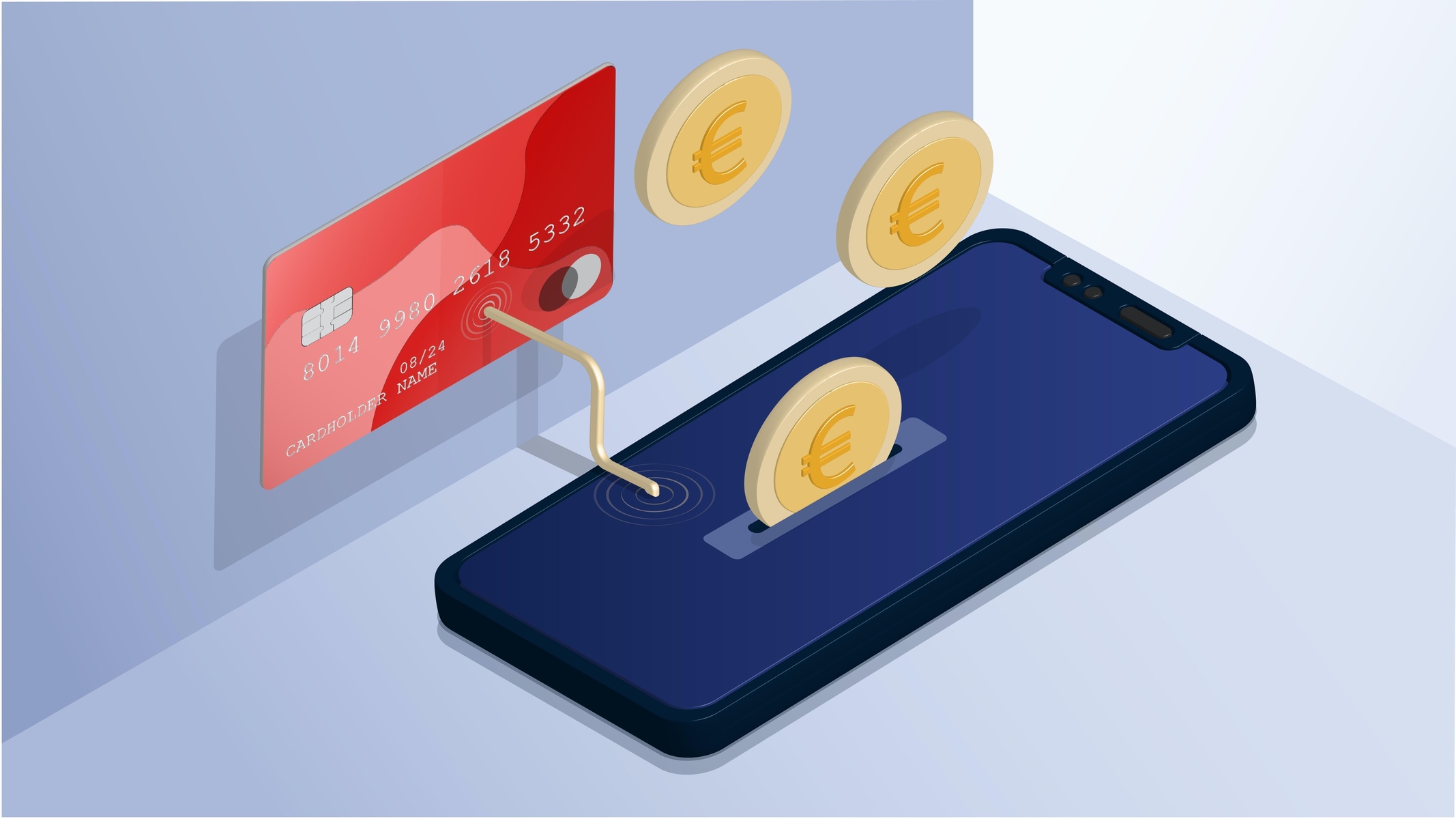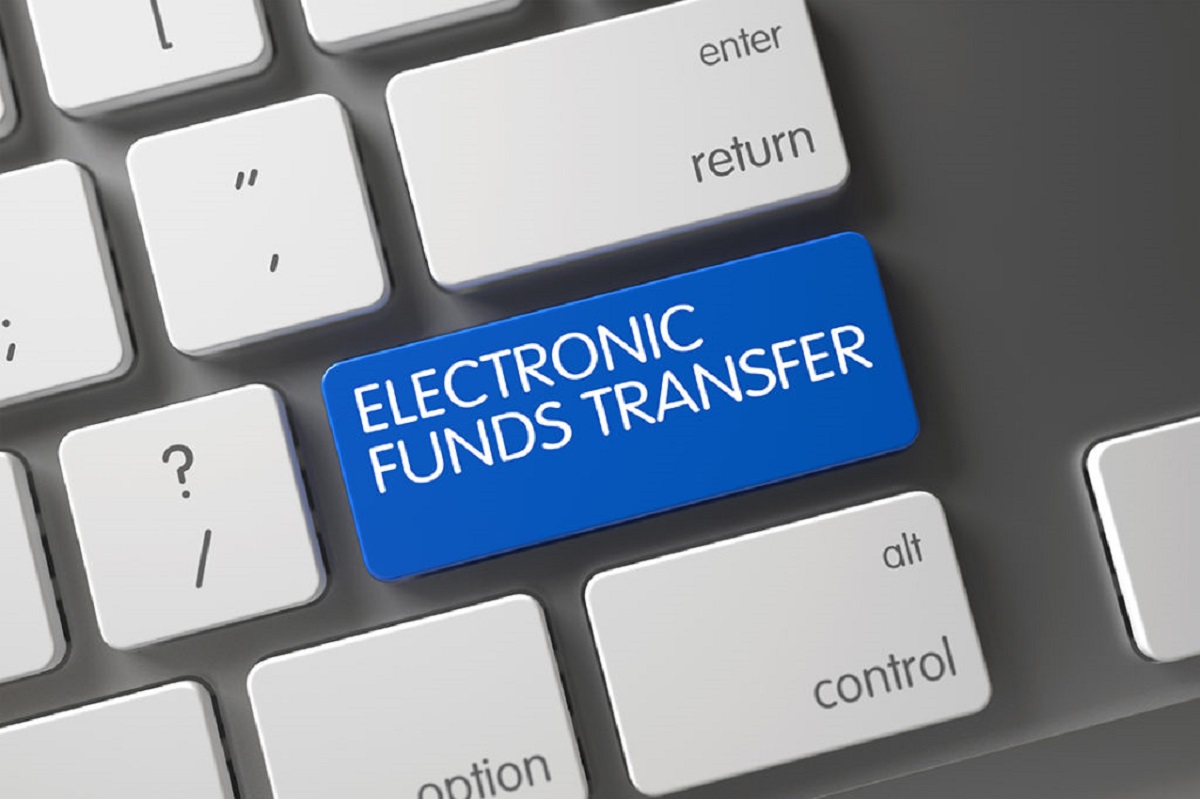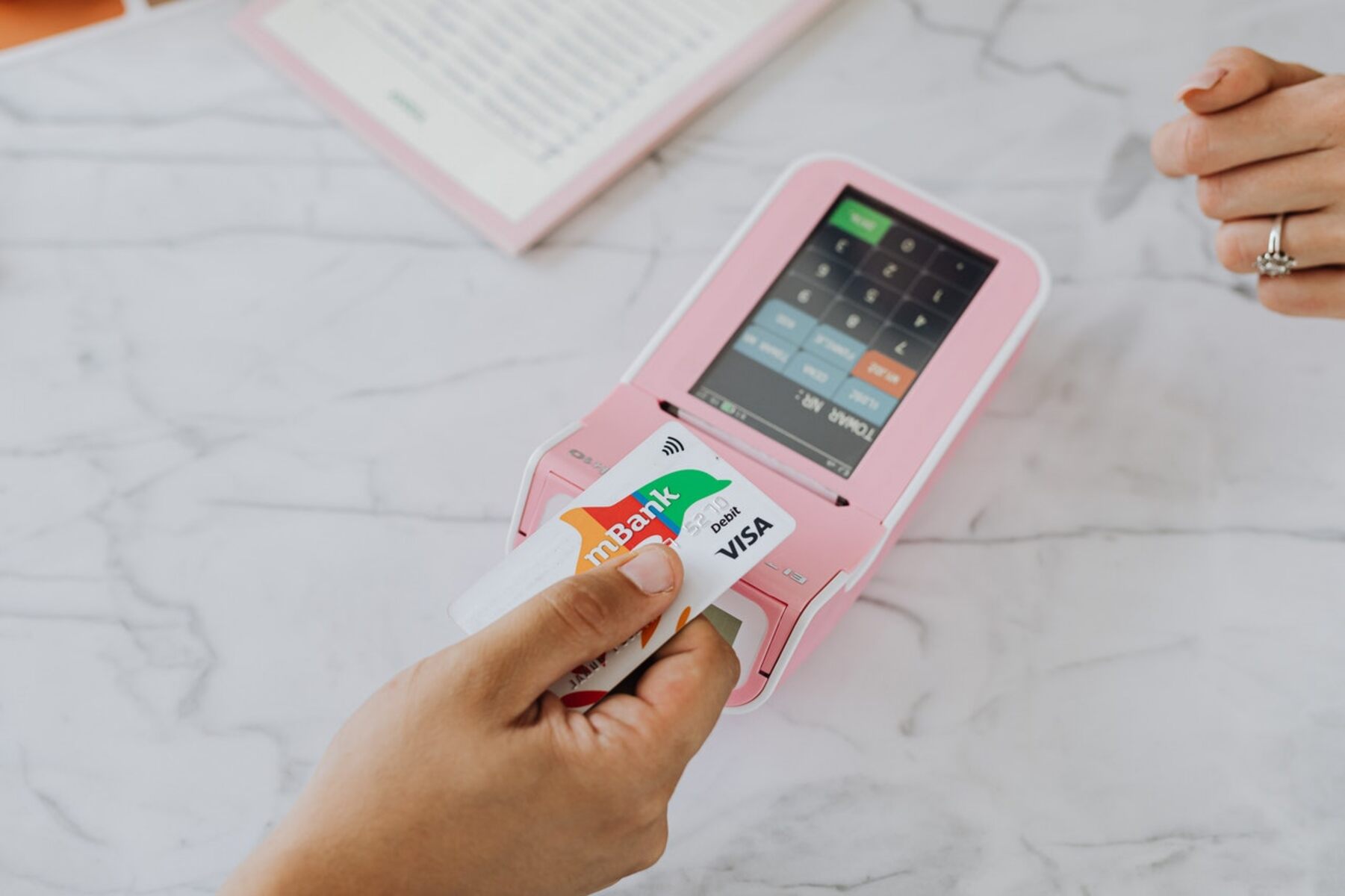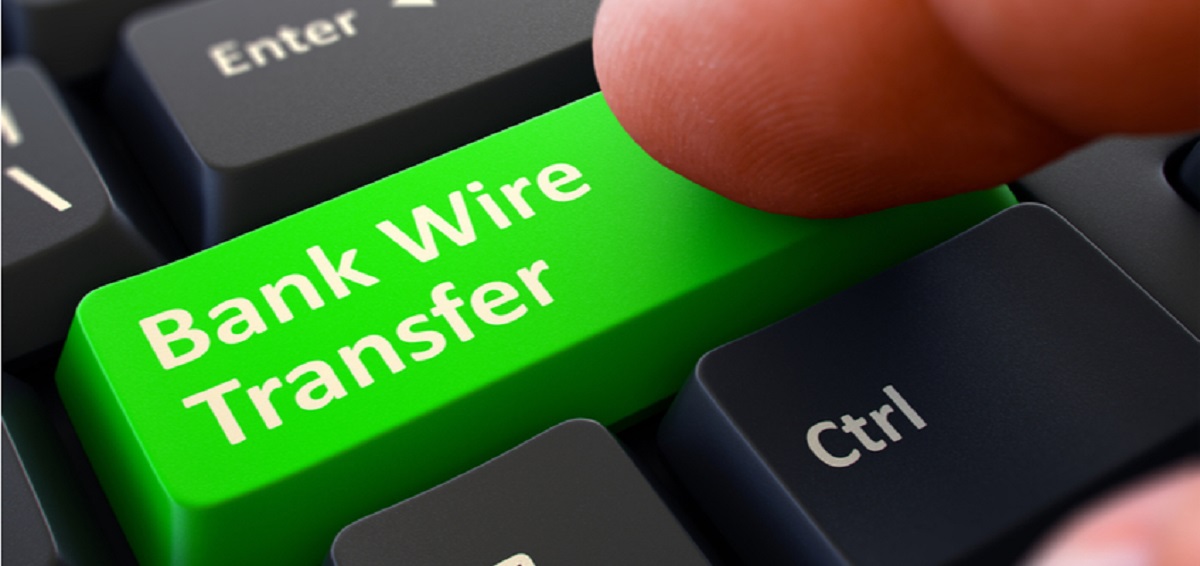Introduction
Welcome to the world of electronic money transfer! In this digital age, financial transactions have become easier and more convenient than ever before. Gone are the days of lining up at the bank or sending physical checks in the mail. With electronic money transfer, you can send and receive funds with just a few clicks or taps on your device.
So, what exactly is electronic money transfer? In simple terms, it is the process of electronically moving funds from one person or entity to another. Instead of using physical cash, checks, or money orders, electronic money transfer relies on digital technologies to facilitate secure and efficient transactions.
Electronic money transfer has revolutionized the way we handle our finances. Whether you want to transfer money to a friend, pay for online purchases, or send funds to a family member living abroad, electronic money transfer offers a quick and reliable solution.
But how does it work? To understand the process better, let’s delve into the mechanics of electronic money transfer.
Electronic money transfer works by utilizing a network of computers and electronic systems to securely transmit funds between two parties. The process involves several steps, including authentication, authorization, and clearing.
Firstly, the sender initiates the transfer by providing the necessary information, such as the recipient’s details and the amount to be transferred. This information is securely transmitted to the electronic money transfer service provider.
The service provider then verifies the sender’s identity and ensures that the necessary funds are available in their account. Once the sender’s transaction is authorized, the service provider deducts the specified amount from their account and credits it to the recipient’s account.
The recipient is then notified of the successful transfer and can access the funds through their account. In some cases, the funds may be available for immediate use, while in others, they may require a processing time depending on the service provider and the type of transfer.
One of the significant advantages of electronic money transfer is its speed and convenience. Unlike traditional methods, such as wire transfers or mailing physical checks, electronic transfers are almost instantaneous. This makes it ideal for urgent financial needs or time-sensitive transactions.
In addition to its speed, electronic money transfer also offers enhanced security. Encryption and other security measures are employed to safeguard the transfer process and protect sensitive financial information. This provides peace of mind and minimizes the risk of fraud or unauthorized access.
There are various types of electronic money transfer services available today, ranging from bank transfers and mobile payment apps to online payment platforms. Each service has its own set of features, fees, and limitations, so it’s crucial to choose one that best suits your needs and preferences.
In the following sections, we will explore the different types of electronic money transfer, popular service providers, and tips for ensuring the security and safety of your transactions. Whether you’re a frequent sender or occasional recipient, understanding electronic money transfer will empower you to make informed financial decisions and take advantage of the convenience it offers.
What is Electronic Money Transfer?
Electronic money transfer refers to the process of exchanging funds digitally from one individual or entity to another. It eliminates the need for physical currency, checks, or money orders by utilizing electronic systems and technologies to facilitate secure and swift transactions.
With electronic money transfer, you can send money to anyone, anywhere in the world, with just a few clicks or taps on your computer or mobile device. Whether you’re paying a bill, sending funds to a friend, or making an online purchase, electronic money transfer provides a convenient and efficient solution.
Unlike traditional methods of transferring money, such as in-person cash transactions or physical checks, electronic money transfer allows for quick and hassle-free transactions. Gone are the days of waiting in long queues at the bank or worrying about lost or stolen checks in the mail.
Electronic money transfer relies on secure digital systems to handle the entire transfer process. These systems ensure that funds are transferred safely and encrypted to protect personal and financial information.
When initiating an electronic money transfer, you typically provide the recipient’s details and the amount you wish to send. This information is securely transmitted to an electronic money transfer service provider, such as a bank or online payment platform.
The service provider then verifies your identity and checks if you have sufficient funds in your account. Once authorized, the specified amount is deducted from your account and credited to the recipient’s account, which they can access through their own banking or online payment account.
Electronic money transfer offers numerous advantages. It enables you to send money quickly, making it ideal for emergencies or time-sensitive transactions. You can also send money internationally without the need for lengthy processes or high fees associated with traditional wire transfers.
Additionally, electronic money transfer enhances financial security. With encryption and other security measures in place, your personal and financial information is protected during the transfer process. This minimizes the risk of fraud or unauthorized access to your funds.
Furthermore, electronic money transfer services are often available 24/7, allowing you to send or receive money at any time that is convenient for you. This flexibility ensures that you have access to your funds whenever you need them.
In summary, electronic money transfer is a convenient, secure, and swift method of exchanging funds digitally. Whether you’re conducting personal or business transactions, electronic money transfer offers speed, convenience, and enhanced security. Understanding how electronic money transfer works and the various services available can empower you to make informed financial decisions and simplify your financial transactions.
How Does Electronic Money Transfer Work?
Electronic money transfer works by leveraging digital technologies to facilitate the exchange of funds between individuals or entities. It involves several steps, from initiating a transfer to the final receipt of funds by the recipient.
The process begins with the sender providing the necessary details to initiate the transfer. This typically includes the recipient’s information, such as their name, account number, and perhaps additional identification verification. The sender also specifies the amount of money to be transferred.
Once the sender has inputted the required information, it is securely transmitted to the electronic money transfer service provider. The provider verifies the sender’s identity to ensure that the transaction is legitimate and authorized.
If the sender is using an existing account with the service provider, the system will check if they have sufficient funds to complete the transfer. In the case of a bank transfer, the system will confirm that the sender has a balance equal to or greater than the transfer amount.
Once the transfer is authorized, the specified amount is deducted from the sender’s account and credited to the recipient’s account. This transfer of funds can occur within the same financial institution or across different institutions depending on the specific transfer type and service provider.
For immediate transfers, the recipient is notified of the successful transaction almost immediately. They can then access the funds in their account, typically through their online banking portal or the service provider’s mobile app.
In some cases, depending on the service provider and transfer type, there may be a processing time involved before the recipient can access the funds. This is more common with international transfers or transfers between different financial institutions. The processing time allows for necessary checks, verification, and clearing of the funds before they are made available to the recipient.
It is important to note that electronic money transfer services can differ in terms of availability, fees, processing times, and additional features. Some service providers may offer expedited transfers for an additional fee, while others may prioritize security measures and have longer processing times.
Overall, electronic money transfer offers a convenient and efficient alternative to traditional methods of transferring funds. It eliminates the need for physical cash or paper-based transactions, reducing the potential for errors, loss, and theft. With its quick processing times and enhanced security measures, electronic money transfer has become a popular choice for individuals and businesses alike.
Understanding how electronic money transfer works will enable you to choose the right service provider and method that best suits your needs. Whether you’re making a local or international transfer, electronic money transfer provides a seamless and secure way to move funds digitally.
Advantages of Electronic Money Transfer
Electronic money transfer offers a range of advantages over traditional methods of exchanging funds. Whether you’re sending money locally or internationally, electronic money transfer provides convenience, speed, security, and accessibility that make it a preferred choice for many individuals and businesses.
One of the key advantages of electronic money transfer is its convenience. With just a few clicks or taps on your computer or mobile device, you can send or receive money from anywhere at any time. Gone are the days of visiting a bank branch or waiting in line to send a physical check or money order. Electronic money transfer allows you to complete transactions from the comfort of your own home or on the go.
In addition to convenience, electronic money transfer offers unparalleled speed. Unlike traditional methods that may involve several days for checks to clear or wire transfers to process, electronic money transfer transactions are typically completed in a matter of minutes. This makes it ideal for urgent financial needs or time-sensitive transactions such as bill payments or emergency fund transfers.
Security is another significant advantage of electronic money transfer. Service providers employ advanced encryption and security measures to protect sensitive financial information and ensure the safe transfer of funds. This minimizes the risk of fraud, identity theft, or unauthorized access to your funds. Additionally, electronic money transfer eliminates the need for carrying large amounts of cash or sending physical checks through the mail, reducing the risk of loss or theft.
Electronic money transfer also offers increased accessibility. With traditional methods, geographical limitations or banking hours can pose challenges when sending or receiving funds. Electronic money transfer services, on the other hand, are available 24/7. This means you have the flexibility to send or receive money at any time, regardless of your location or time zone. This accessibility is particularly beneficial for international transfers, as it allows you to bypass the constraints and costs associated with traditional wire transfers.
Furthermore, electronic money transfer often comes with additional features that enhance the overall experience. Many platforms offer options such as recurring payments, transaction histories, and customizable alerts to keep track of your financial transactions. Some services even provide integration with other financial management tools, making it easier to manage your finances in one place.
Lastly, electronic money transfer eliminates the need for physical paperwork or manual record-keeping. Transaction details and histories are typically stored electronically, making it easier to track and manage your financial transactions. This digital record-keeping can be beneficial for personal financial management, budgeting, and tax purposes.
In summary, the advantages of electronic money transfer include convenience, speed, security, accessibility, and additional features. By embracing electronic money transfer services, individuals and businesses can enjoy a seamless and efficient way to send, receive, and manage their funds.
Types of Electronic Money Transfer
Electronic money transfer encompasses various methods and platforms that facilitate the digital exchange of funds. Understanding the different types of electronic money transfer can help you choose the most suitable option for your specific needs. Here are some common types:
- Bank Transfers: This is one of the most common and widely used forms of electronic money transfer. Bank transfers allow you to send funds from your bank account to another individual’s or company’s bank account. This can be done through online banking portals or mobile banking apps provided by your bank. Bank transfers are typically secure, reliable, and may involve lower or no transaction fees for transfers within the same bank.
- Mobile Payment Apps: With the proliferation of smartphones, mobile payment apps have gained popularity for electronic money transfer. These apps, such as Venmo, PayPal, Cash App, and Zelle, allow users to link their bank accounts or credit cards and send money directly to other app users. Mobile payment apps often offer additional features like splitting bills, requesting payments, and making payments at participating merchants.
- Online Payment Platforms: Online payment platforms like PayPal, Skrill, and Google Pay provide a secure way to send and receive money electronically. These platforms require users to create an account and link it to their bank account or credit card. Online payment platforms offer a range of functionality, including international transfers, payment for online purchases, and easy integration with e-commerce websites.
- Wire Transfers: Wire transfers are commonly used for international money transfers. They involve the direct transfer of funds from one bank to another through a network such as SWIFT (Society for Worldwide Interbank Financial Telecommunication). Wire transfers are often used for larger transactions or when a quick transfer is required. However, they may involve higher fees and longer processing times compared to other electronic money transfer options.
- Prepaid Cards: Prepaid cards issued by financial institutions or payment providers can also be used for electronic money transfer. These cards function like debit or credit cards but require preloading funds onto the card before use. Prepaid cards can be used for online purchases, in-person transactions, and sometimes even international transfers. They offer convenience and security, as the user’s personal bank account information is not exposed during transactions.
It’s important to note that the availability and specific features of electronic money transfer methods may vary based on your location and the service providers you choose. Always consider factors such as fees, security, speed, and convenience when selecting the appropriate method for your needs.
Understanding the different types of electronic money transfer options empowers you to make informed decisions and select the method that best aligns with your requirements.
Popular Electronic Money Transfer Services
The electronic money transfer landscape is filled with a variety of service providers that offer convenient and secure platforms for sending and receiving funds digitally. Here are some of the most popular electronic money transfer services:
- PayPal: PayPal is one of the most well-known and widely used electronic money transfer services. It allows users to send and receive money to and from other PayPal users worldwide. PayPal also offers a range of features, such as buyer protection, integration with e-commerce websites, and the ability to link your PayPal account to your bank account or credit card.
- Venmo: Venmo, owned by PayPal, has gained significant popularity in recent years, particularly among younger users. Venmo is a mobile payment app that allows users to send and receive money to and from friends and family. It also features a social aspect, where users can engage with and view their friends’ transactions.
- Zelle: Zelle is a peer-to-peer payment network that enables users to send money directly from their bank accounts to other Zelle users. It is often integrated into major banking apps and offers fast and secure transactions between participating banks.
- Cash App: Cash App, also known as Square Cash, is a mobile payment app that allows users to send and receive money, as well as make purchases using their Cash Card. Cash App offers features such as investing in stocks and Bitcoin, and it has gained popularity for its straightforward and user-friendly interface.
- Google Pay: Google Pay is a digital wallet platform that enables users to make payments, send and receive money, and store loyalty cards on their mobile devices. It integrates with various Google services, making it convenient for users who already utilize Google products.
- Western Union: Western Union is a well-established money transfer service provider that facilitates both domestic and international transfers. With a wide network of agent locations, users can send and receive money in person as well as through their online platform or mobile app.
These are just a few examples of the popular electronic money transfer services available today. It’s important to consider factors such as fees, transaction limits, transfer speed, and security features when choosing a service provider that aligns with your needs and preferences. Additionally, check for any specific regional or country-specific options that may be available as well.
Remember to review and compare the features and offerings of different electronic money transfer services to determine which one is most suitable for your personal or business transactions.
Security and Safety of Electronic Money Transfer
When it comes to electronic money transfer, security and safety are of paramount importance. Service providers employ various measures to ensure the protection of your financial transactions and personal information. Here are some key aspects of the security and safety of electronic money transfer:
Data Encryption: Electronic money transfer services use encryption technology to safeguard the confidentiality of your personal and financial information. This ensures that your data is securely transmitted and cannot be intercepted or accessed by unauthorized individuals.
Secure Authentication: To prevent unauthorized access to your account, electronic money transfer services employ rigorous authentication processes. This may include multifactor authentication, such as entering a password, providing biometric data, or using a unique code sent to your registered device.
Fraud Detection: Service providers have implemented advanced fraud detection systems that analyze transaction patterns and identify any suspicious activity. These systems use algorithms and machine learning to detect and prevent fraudulent transactions, providing an added layer of security for users.
Customer Verification: To ensure the safety of electronic money transfers, service providers verify the identity of their customers. This typically involves providing personal information and verifying it against existing records. By confirming the identity of users, service providers mitigate the risk of fraudulent transactions.
Financial Regulations: Electronic money transfer services are subject to financial regulations imposed by relevant authorities. These regulations aim to safeguard the financial system and protect consumers. Compliance with these regulations helps ensure transparency, accountability, and the implementation of security measures within the industry.
Privacy Protection: Electronic money transfer services have stringent privacy policies in place to protect your personal information. They are committed to keeping your data private and secure, only using it for authorized purposes and disclosing it only as required by law.
Customer Support and Dispute Resolution: Reputable electronic money transfer service providers offer robust customer support and dispute resolution processes. In case of any issues or unauthorized transactions, users can contact customer support for assistance and report the problem. Service providers usually have dedicated teams to investigate and resolve such incidents promptly.
Security Best Practices: To ensure the safety of your electronic money transfers, it is essential to practice good security habits. This includes using strong and unique passwords, regularly updating your device’s software, being cautious of phishing attempts, and monitoring your transactions for any suspicious activity.
While electronic money transfer services strive to provide secure transactions, it is important for users to remain vigilant and take necessary precautions to protect their financial information. By following security best practices and using reputable service providers, you can enhance the security and safety of your electronic money transfers.
Factors to Consider when Choosing an Electronic Money Transfer Service
With numerous electronic money transfer service providers available, it’s important to consider several factors before choosing the most suitable one for your needs. Here are some key factors to consider:
Security: The security measures implemented by the service provider should be a top priority. Ensure the company uses encryption technology, secure authentication processes, and fraud detection systems to protect your personal and financial information.
Fees and Exchange Rates: Compare the fees charged by different service providers for their electronic money transfer services. Some platforms offer competitive fees, while others may charge higher fees for certain transaction types or international transfers. Additionally, consider the exchange rates offered for currency conversions, as this can affect the total amount received by the recipient.
Transfer Speed: Depending on your needs, transfer speed can be an essential factor. Some electronic money transfer services offer instant or near-instant transfers, while others may take longer. Consider the urgency of your transfer and choose a service that aligns with your timing requirements.
Global Reach: If you frequently send or receive money internationally, look for service providers that facilitate global transfers. Ensure that the service is available in the countries you need to transact with and that it supports the desired currencies.
User Experience and Interface: The user interface of the electronic money transfer service should be user-friendly and intuitive. An easy-to-navigate platform or mobile application will make the process smoother and more convenient. Consider reading user reviews or testing out the service’s interface before making a decision.
Customer Support: Reliable customer support is crucial when it comes to resolving issues or addressing any concerns. Check if the service provider offers accessible customer support channels such as phone, email, or live chat, and ensure they have a reputation for responsive and helpful assistance.
Integration and Compatibility: If you plan to integrate the electronic money transfer service with other platforms or systems, ensure compatibility and available integration options. For example, if you are an e-commerce merchant, check if the service can be seamlessly integrated into your website’s payment system.
Reputation and Trust: Perform research and consider the reputation and track record of the electronic money transfer service provider. Look for reviews, ratings, and testimonials from other users to get a sense of their reliability, customer satisfaction, and overall reputation in the industry.
Additional Features: Some service providers offer additional features that may be beneficial to you. These could include options like recurring payments, request money functionality, multiple wallet support, or compatibility with loyalty programs. Evaluate which additional features align with your preferences and requirements.
Regulatory Compliance: Ensure that the electronic money transfer service provider complies with relevant financial regulations and possesses the necessary licenses and certifications. Regulatory compliance helps ensure transparency, consumer protection, and adherence to strict security and operational standards.
By evaluating these factors and considering your specific needs and preferences, you can select an electronic money transfer service that best suits your requirements. Remember to review and compare multiple service providers to make an informed decision that aligns with your financial goals.
How to Send and Receive Money Electronically
Sending and receiving money electronically has become increasingly accessible and convenient. Here are the general steps on how to send and receive money electronically:
Sending Money:
- Select a Service Provider: Choose an electronic money transfer service provider that suits your needs, considering factors such as fees, security, transfer speed, and available features.
- Create an Account: Sign up for an account with the chosen service provider. This typically involves providing your personal details and verifying your identity.
- Link Payment Source: Connect your bank account, credit card, or funding source to your account. This allows you to transfer funds from your chosen payment method.
- Enter Recipient Information: Provide the necessary recipient information, such as their name, account number, or email address, depending on the service provider’s requirements.
- Specify Transfer Amount: Enter the amount you wish to send to the recipient. Take note of any applicable fees or currency conversion rates that may apply.
- Review and Confirm: Double-check all the details before confirming the transfer. Ensure that the recipient information is accurate, and review any fees or exchange rates that may be applied.
- Authorize the Transfer: Follow the service provider’s instructions to authorize the transfer, which may involve using a password, biometric verification, or confirming through a linked device.
- Receipt or Confirmation: After completing the transfer, you may receive a receipt or confirmation via email or within the service provider’s website or app. Keep this for your records.
Receiving Money:
- Ensure You Have an Account: To receive money electronically, you need to have an account with the same service provider as the sender or an alternative method to receive funds.
- Share Your Information: Provide the sender with the necessary information to facilitate the transfer. This could be your account details, email address, or username associated with your electronic money transfer account.
- Check for Funds: Monitor your account to check for the incoming funds. Depending on the service provider and transfer type, the funds may be available almost instantly or may require a processing time before they appear in your account.
- Access and Use the Funds: Once the funds are available in your account, you can access them as per the service provider’s instructions. This might involve transferring the funds to another bank account, making online purchases, or using the funds for in-person transactions.
It’s worth noting that the specific steps for sending and receiving money electronically may vary slightly depending on the service provider you choose. Always refer to the service provider’s instructions and guidelines for detailed information on their process.
By utilizing electronic money transfer services, you can easily and securely send and receive funds with just a few simple steps.
Conclusion
Electronic money transfer has revolutionized the way we handle our finances, providing a convenient, secure, and efficient method of sending and receiving funds. In this digital age, electronic money transfer services offer a wide range of features and options to suit the diverse needs of individuals and businesses alike.
From bank transfers to mobile payment apps and online payment platforms, there are various electronic money transfer methods available, each with its own advantages and considerations. When choosing a service provider, factors such as security, fees, transfer speed, and additional features should be taken into account.
The security and safety of electronic money transfer are paramount. Service providers implement robust security measures, including data encryption, secure authentication, and fraud detection systems, to protect your personal and financial information. Being aware of security best practices and using reputable service providers can further enhance the safety of your electronic money transfers.
Understanding the different types of electronic money transfer services and popular options helps you navigate the landscape and make informed decisions. Whether sending money locally or internationally, electronic money transfer offers convenience, speed, accessibility, and additional features that simplify and streamline financial transactions.
By following the general steps to send and receive money electronically, you can take advantage of the convenience and efficiency offered by electronic money transfer services. Connect your accounts, provide recipient details, review and confirm the transfer, and authorize it securely through the service provider’s platform. On the receiving end, provide necessary information, monitor your account for incoming funds, and access them as instructed by the service provider.
As electronic money transfer continues to evolve, it’s essential to stay up to date with advancements in technology, security measures, and changes in service provider offerings. Regularly reviewing your chosen service and being mindful of emerging trends will ensure that you can make the most of electronic money transfer and adapt to the evolving financial landscape.
Embracing electronic money transfer empowers individuals and businesses to manage their finances more efficiently, streamline transactions, and enjoy the benefits of speed, convenience, and security. With the right service provider and knowledge of the available options, you can harness the power of electronic money transfer to simplify your financial transactions and stay connected in this digital world.

























